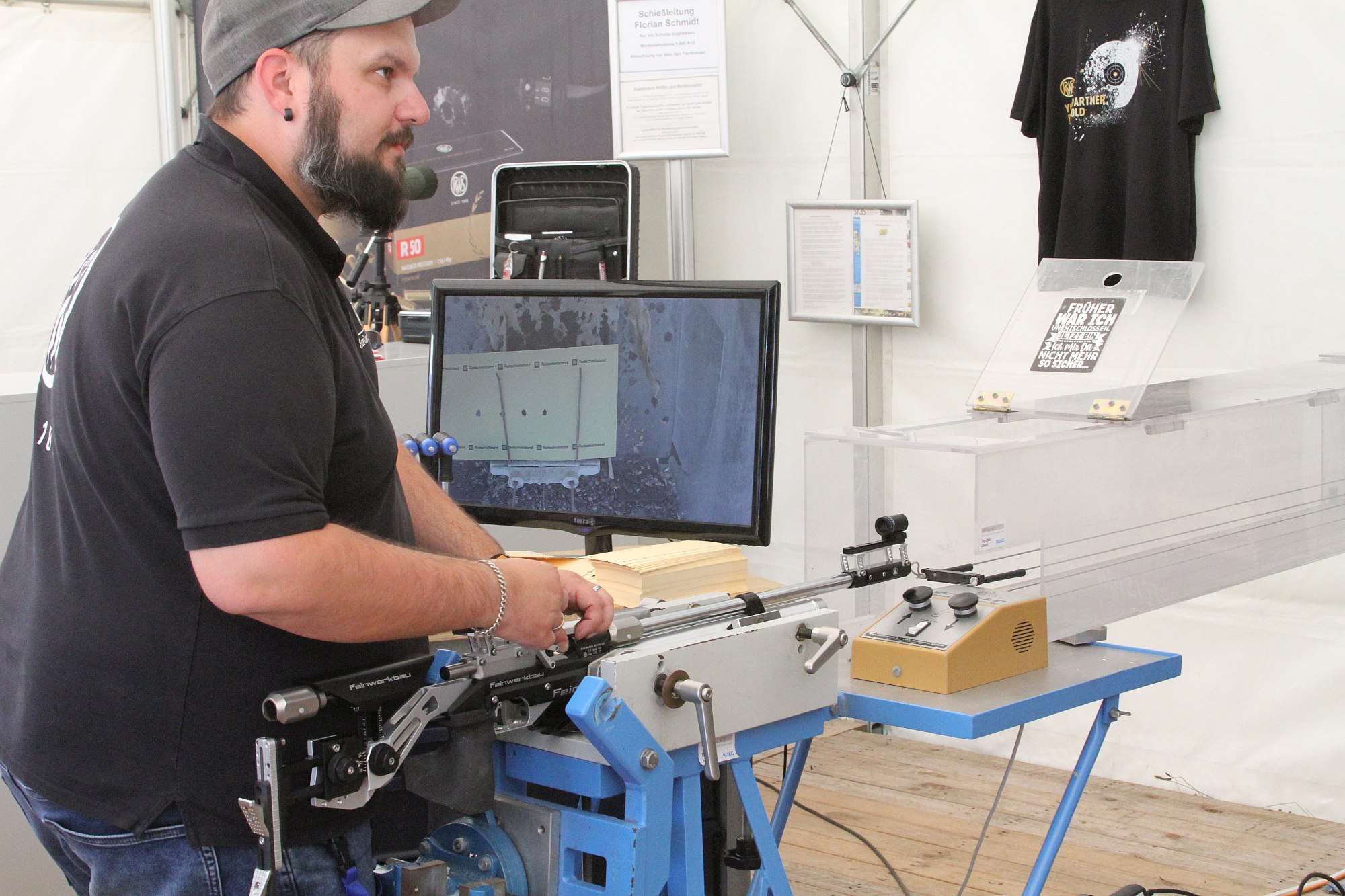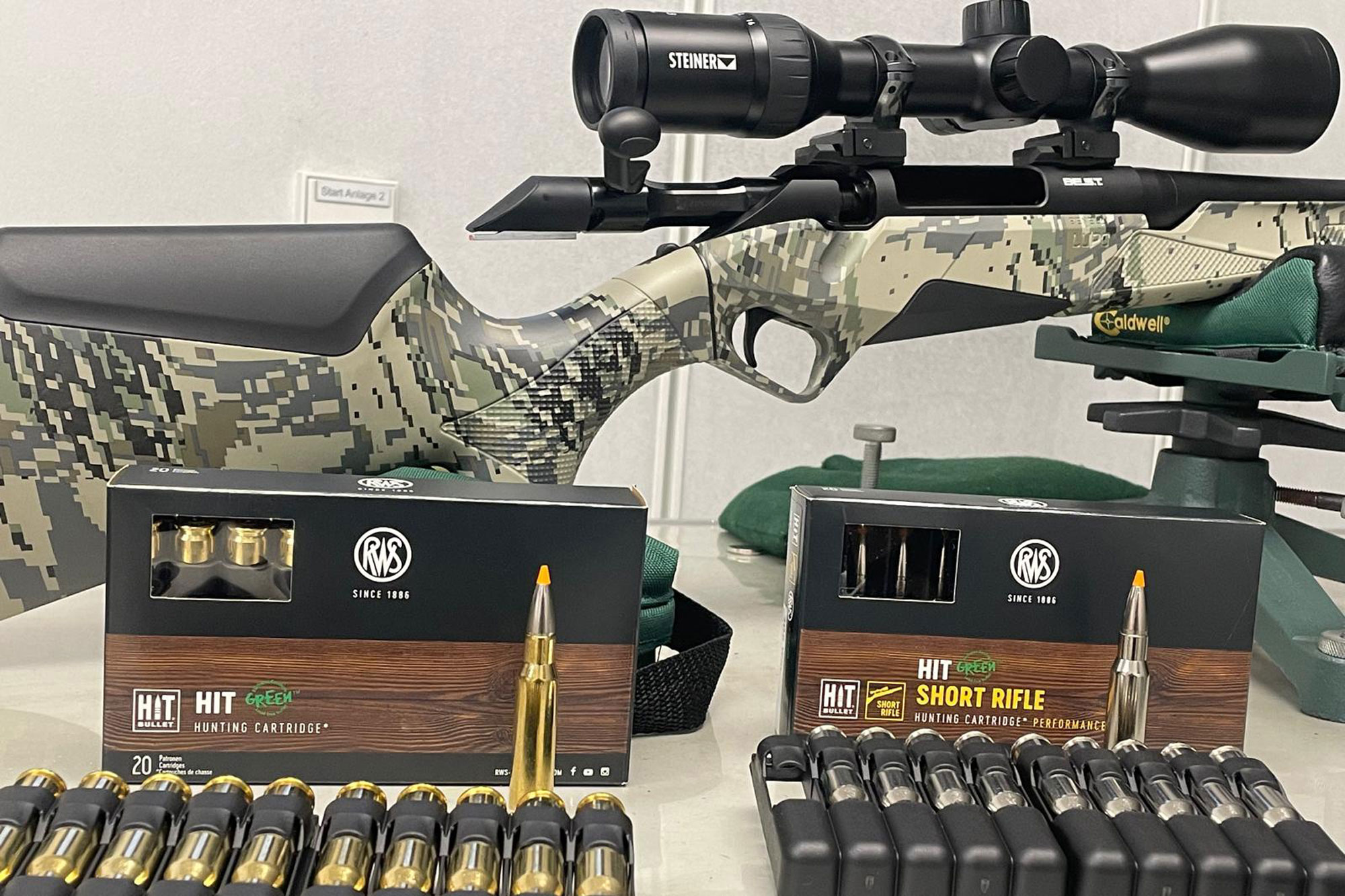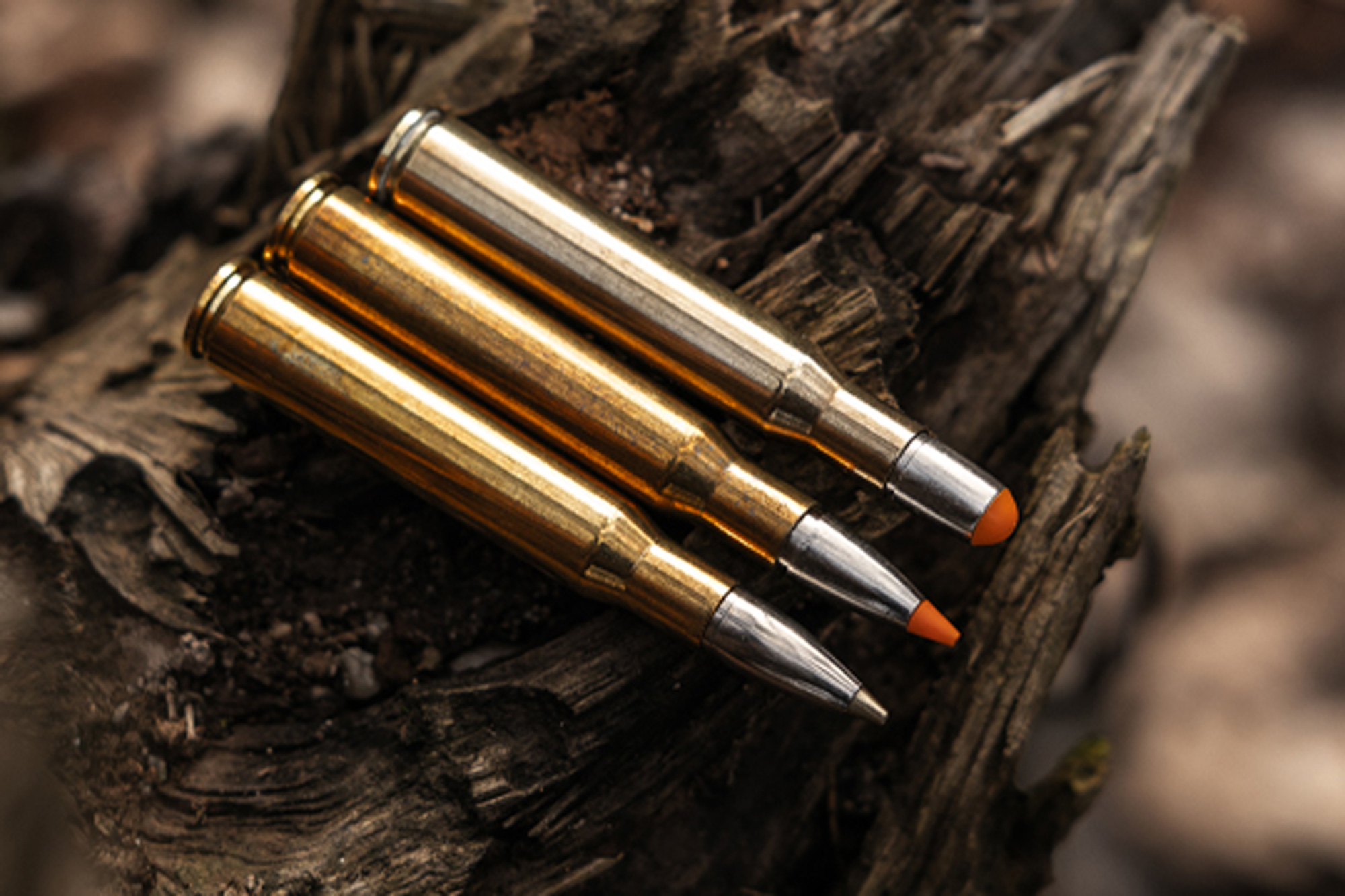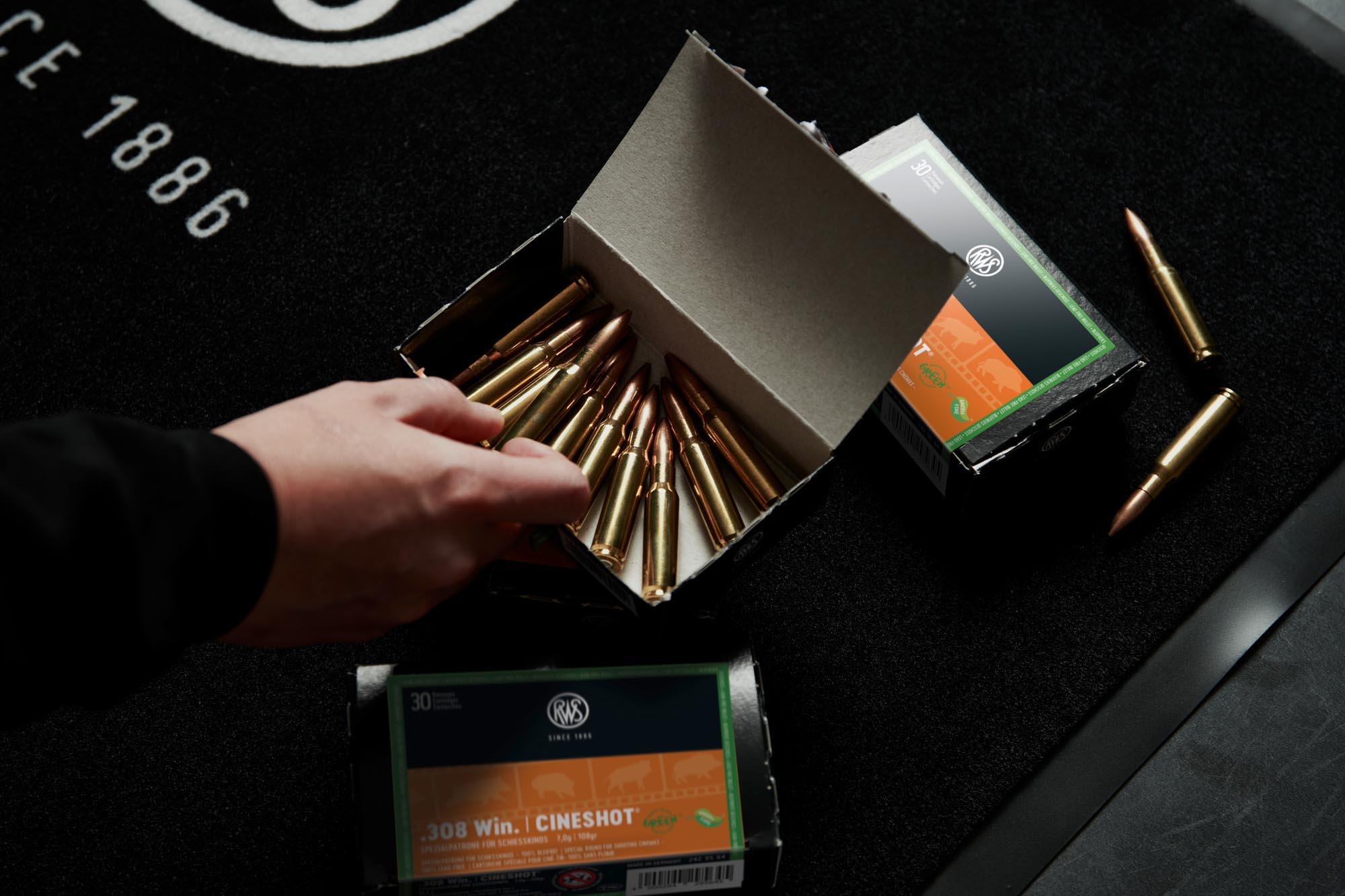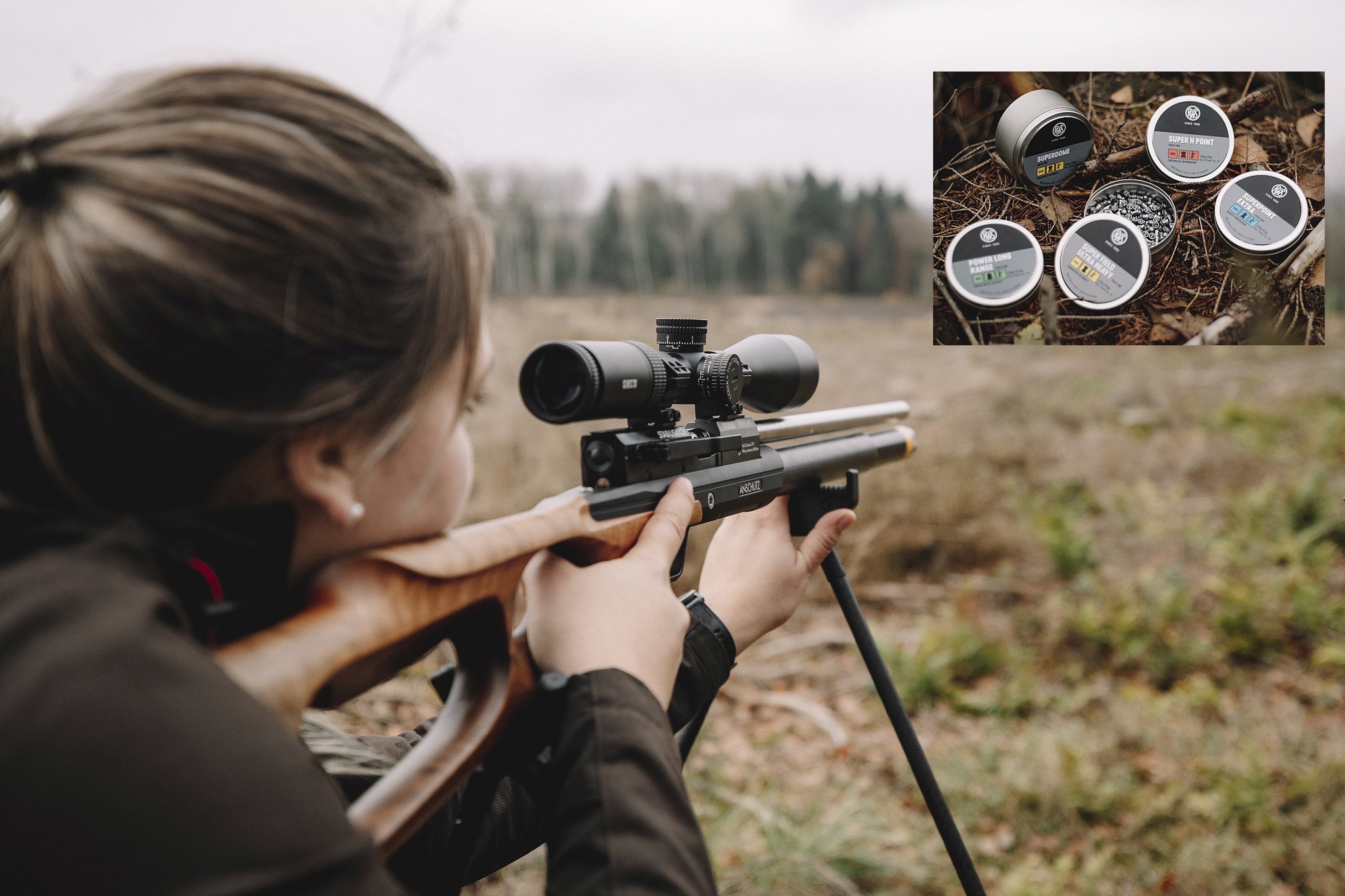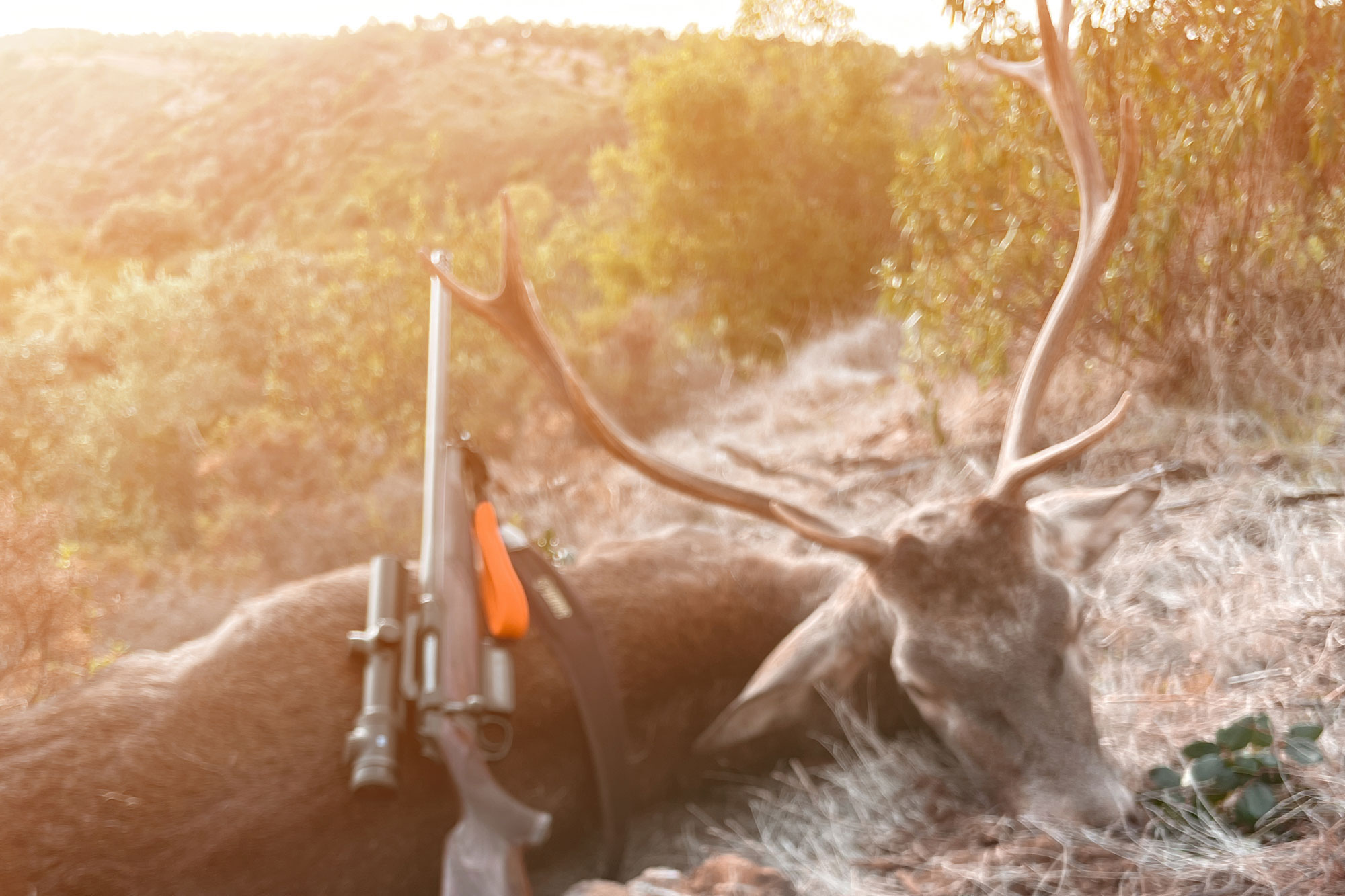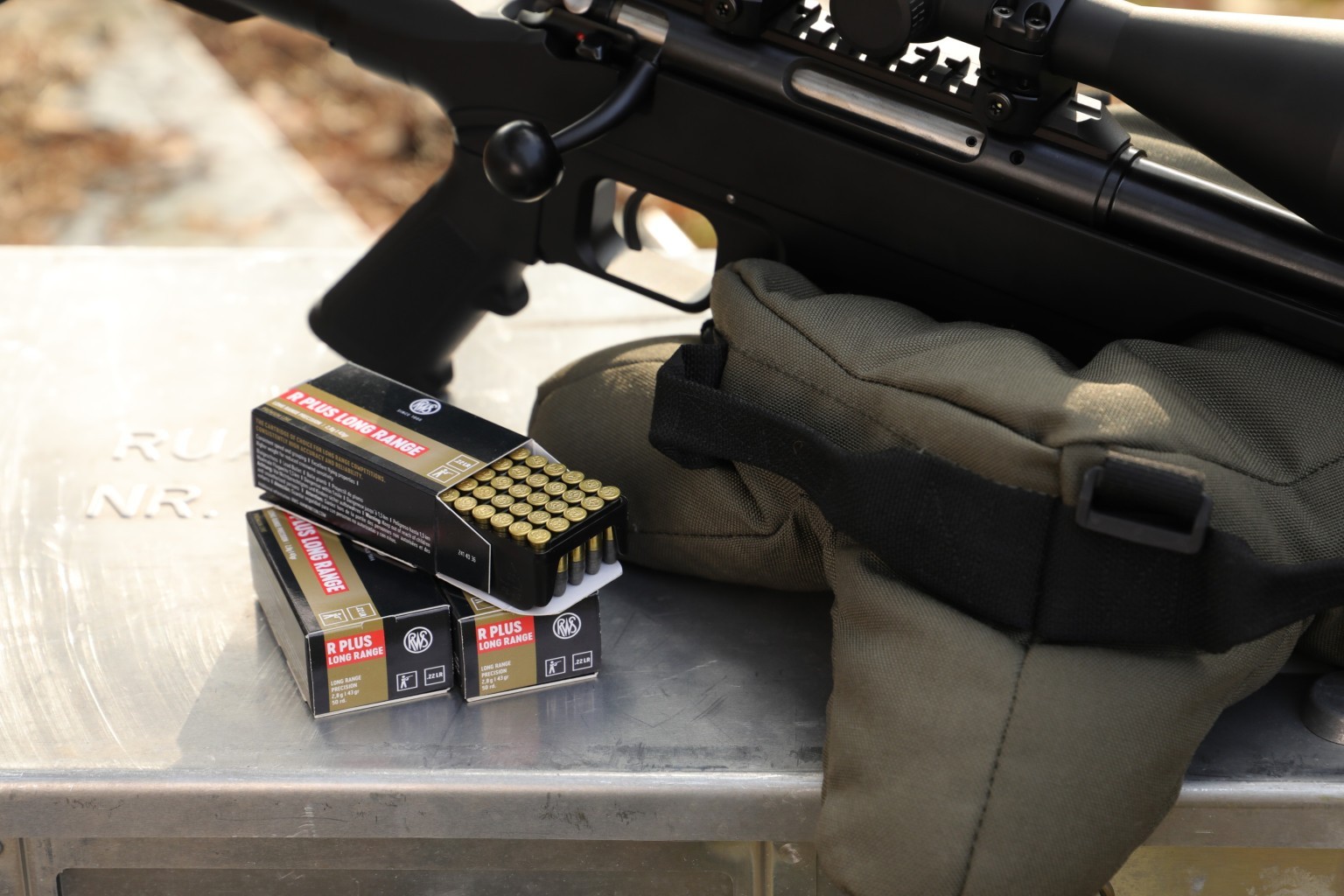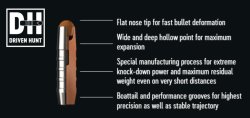
Hunters looking for an extremely effective bullet for driven hunts will inevitably come across the RWS DRIVEN HUNT, which the leading German hunting ammunition manufacturer RWS introduced around three years ago. RWS has since expanded its range of calibers several times. The DRIVEN HUNT bullet is easily recognised by its unusually large ballistic tip in a yellow-orange color. Hidden under this strongly flattened plastic cap is a deep hollow point in the innovative deformation bullet, which is predestined for use at ultra-short and short ranges. The RWS DRIVEN HUNT is made of monolithic copper and has a nickel coating to minimise barrel fouling. However, copper is lighter than lead, which is why a higher velocity is required to transfer the same energy into the target than with a lead bullet of the same volume.
Principle of action and residual weight of the RWS DRIVEN HUNT
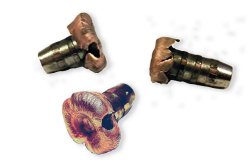
The aforementioned deep hollow point serves to initiate immediate mushrooming of the fast bullet when it penetrates the game body. In the tissue, the bullet cross-section then rapidly increases to up to 2.5 times the bullet caliber, which in turn leads to an extremely high energy output and – in conjunction with the high penetration effect of the monolithic bullet – also to a high shock effect with a correspondingly high knock-down effect.
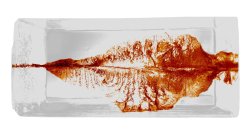
In addition, the bullet design and the manufacturing process used by RWS also ensure that the bullet delivers the desired exit wound with a high degree of reliability – even at short or extremely short shooting distances, as is often the case on driven hunts. At the same time, the DRIVEN HUNT remains largely dimensionally stable. In tests at a shooting distance of 20 metres, the original 10.7 gram .30 bullet still had a residual weight of a proud 10.2 grams. The small difference is probably primarily due to the loss of the orange-yellow plastic nose tip and shows that the bullet does not produce any fragments. According to RWS, the bullet design would also function in the game body even with a longer range shot and deliver approximately the same result. However, the bullet also reaches its limits at ranges greater than those generally used for driven hunts, so that, depending on the caliber, it should not be used to hunt further than a maximum of 100 to 150 metres.
The RWS DRIVEN HUNT is a clever way of avoiding the need for chemical cleaning when changing bullets

The bullet itself is a monolithic copper projectile, which – like most solid bullets of this type on the market – could actually be made of copper alone. However, to improve the bullet properties, RWS has coated the DRIVEN HUNT with a wafer-thin layer of nickel so that unnecessary copper deposits in the barrel can be avoided from the outset. Such copper deposits usually make chemical cleaning of the barrel indispensable if you want to change from one bullet material to another. This is where the nickel plating of the bullet comes into play, as it counteracts the barrel fouling. This means that you can easily switch to another tried and tested lead-free bullet from the RWS catalog for long-distance hunting from a hide or at the edge of the field. We are talking about the RWS HIT, which we have already tested extensively here at all4hunters. The HIT bullet is made from the same basic material as the DRIVEN HUNT and also has the same nickel plating as the latter. This makes it possible to change bullets without any significant loss of accuracy. However, when switching from one bullet type to the other, a shift in the point of impact is possible, which is very dependent on the gun and can vary in size. You should therefore determine this deviation on the shooting range and ideally record it in writing. This will ensure that you always have the aiming values that you need to make adjustments on your riflescope when you switch from the DRIVEN HUNT to the HIT for the rest of the year after the driven hunt season, for example. In addition, a check shot before you go hunting with it again can also do no harm to ensure that you have made the changes to the adjustment turrets in the correct direction. The same applies, of course, when you switch back to the DRIVEN HUNT next autumn.
The range of calibers in which factory ammunition with the RWS DRIVEN HUNT is available now includes the .308 Winchester, .30-06 Springfield, .300 Winchester Magnum, 8x57 IS, 8x57 IRS and 9.3x62.
There are also three calibers in which the DRIVEN HUNT is already available as a short rifle load: .308 Winchester, .30-06 Springfield and 9.3x63. You can find out more in the table below.
Manufacturer video: RWS DRIVEN HUNT and DRIVEN HUNT Short Rifle
RWS DRIVEN HUNT Short Rifle – Functionality of the driven hunt cartridges optimised for short barrels and silencers
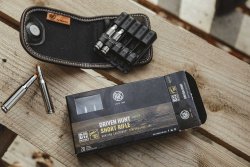
For the gas pressure tests prescribed as part of the approval procedure for rifle cartridges, C.I.P. uses measuring barrels of 60 cm length for standard calibers and 65 cm length for magnum calibers. For this reason, RWS and other ammunition manufacturers in the area of responsibility of this international test commission also orientate themselves to these barrel lengths and design their cartridges with these barrel lengths in mind. However, this means that with very short barrels, the propellant powder often only burns in front of the muzzle. This results in a loss of power, which in some cases manifests itself in significantly lower bullet velocities and therefore also lower energy values, which ultimately leads to a reduced effectiveness of the bullet. Other disadvantages include excessive muzzle flash, a louder muzzle blast and possibly increased wear on silencers. However, as ultra-short barrels and short barrels are now all the rage due to the spread of silencers, RWS has addressed this problem and developed the Short Rifle ammunition series. In order to compensate for the loss of performance described above, the Short Rifle cartridges are specially formulated for short barrels with powders that burn more aggressively, adapted bullet weights and more powerful primers, which together ensure faster burning. RWS therefore also tests the SHORT RIFLE in 50 cm barrels to ensure that the ammunition really does achieve higher velocities thanks to the optimised burn. Nevertheless, the loss of performance in ultra-short barrels of less than 47 cm cannot be fully compensated: some of the powder still burns in front of the muzzle. For this reason, RWS recommends only using rifles with a barrel length of 47 to 55 cm for Short Rifle ammunition. For better differentiation, RWS uses nickel-plated cases for the Short Rifle cartridges, which as a positive side effect are less susceptible to corrosion and have better sliding properties in the chamber than bare brass cases.
Range of applications for the RWS DRIVEN HUNT – The bullet is suitable for these game species
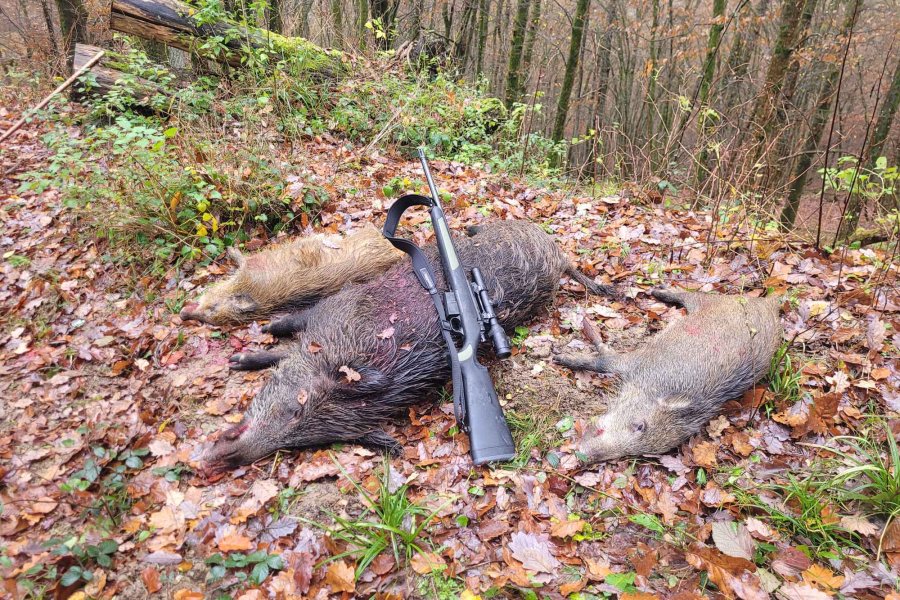
If all the above factors are taken into account, the RWS DRIVEN HUNT is particularly suitable for medium to large game, but can also be used universally on all domestic hoofed game from roe deer to wild boar, mouflon, smaller deer and red deer. Of course, the caliber used, the shooting distance and, last but not least, the shot hardness of the respective game species all play a role. In general, the Driven Hunt should not be used at ranges beyond the 100 meter mark for standard calibers and not beyond the 150 meter mark for the more powerful calibers. The bullet achieves the best shock effect at the shorter ranges between around 20 and 50 metres that are usually used for driven hunts.
RWS DRIVEN HUNT and DRIVEN HUNT Short Rifle – Ballistic data and prices of the lead-free rifle cartridges:*
Cartridge | Caliber | Bullet Weight | v0 | E0 | Price (RRP in euros) per 20 Pieces |
RWS DRIVEN HUNT | .308 Win. | 10.7 g (165 g) | 765 m/s | 3131 J | 96 |
.30-06 Spring. | 10.7 g (165 g) | 810 m/s | 3510 J | 94 | |
.300 Win. Mag. | 10.7 g (165 g) | 924 m/s | 4568 J | 123 | |
8x57 IS | 10.4 g (150 gr) | 783 m/s | 3188 J | 105 | |
8x57 IRS | 10.4 g (150 gr) | 807 m/s | 3386 J | 119 | |
9,3x62 | 16.2 g (250 gr) | 690 m/s | 3856 J | 129 | |
RWS DRIVEN HUNT Short Rifle | .308 Win. | 9.7 g (150 gr) | 812 m/s | 3198 J | 104 |
.30-06 Spring. | 9.7 g (150 gr) | 821 m/s | 3269 J | 98 | |
9,3x62 | 16,2 g (250 g) | 704 m/s | 4014 J | 134 | |
*Manufacturer information; as of November 2024 | |||||
The all4hunters.com verdict on the lead-free RWS DRIVEN HUNT bullet tested by us with the Krieghoff Semprio and a Steel Action
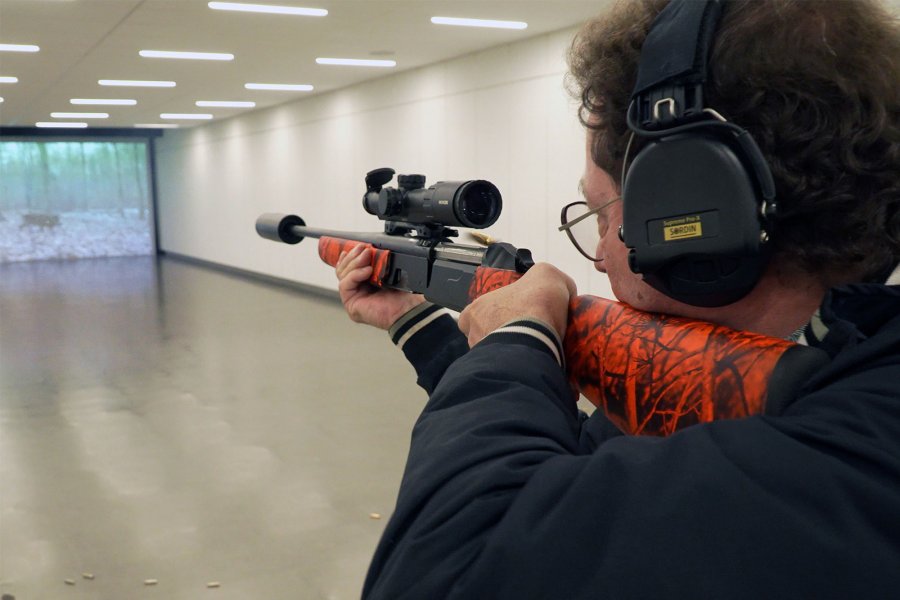
We were able to shoot the factory-manufactured RWS DRIVEN HUNT in .308 Winchester and .30-06 Springfield at ranges from 15 to 60 metres in the shooting cinema and the "running boar" with the two test guns mentioned above. From a hunting point of view, there was absolutely nothing to criticise in terms of accuracy. The practical experience of the hunters in our team of authors when using the DRIVEN HUNT on wild boar was also consistently positive in the distance ranges recommended by the manufacturer: the animals were mostly killed on the spot or only travelled comparatively short distances. Experiences with roe deer and weaker red deer were of a mixed nature. Here, there were shots in which the high knock-down power of the bullet paid off and the game was immediately pinned down at the point of impact. However, in rare cases – despite a favourable shooting distance and a good point of impact – there were also unexpected flight distances, where the fatally hit game sometimes travelled 50 to 70 metres before lying down. If the game was not directly in the line of fire, marks were usually just as easy to find as distinct blood tracks thanks to the exit wound.
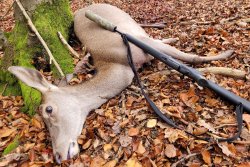
Basically, these impressions also confirm the experiences from a survey of numerous professional hunters who were able to use the RWS DRIVEN HUNT in .308 Winchester, -30-06 Springfield and .300 Winchester Magnum as part of a long-term test. A total of 112 roe deer, 117 wild boar and 118 red deer were brought down.
To summarise the DRIVEN HUNT, it can be said that the advantages of this bullet include a short range extreme effectiveness paired with a pronounced shock effect and a high residual weight, which makes the RWS DRIVEN HUNT an excellent companion for driven hunts, provided that the operating distances are taken into account.
Further information on this lead-free bullet and other loads from the manufacturer's range can also be found on these infotainment pages on the RWS DRIVEN HUNT and the RWS DRIVEN HUNT Short Rifle or in the current online hunting and sport shooting catalogue 2024 from RWS GmbH, starting frompage 18.




